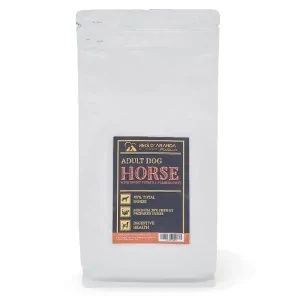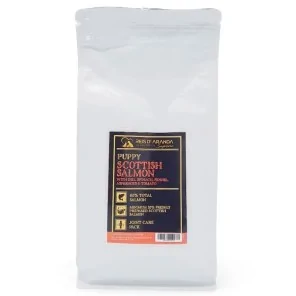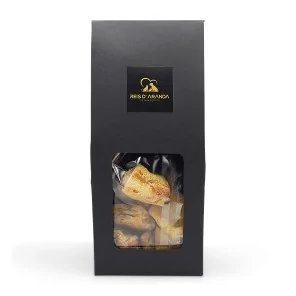Its name says it all: the Vienna blue rabbit comes from Austria. Not only is it beautiful with its shiny blue-grey...
THE GIANT SCHNAUZER
INTRODUCTION
The Giant Schnauzer (German: Riesenschnauzer) is a working breed of dog that was developed in the 17th century in Germany. It is the largest of the three varieties of the Schnauzer breed, the other two being the Standard Schnauzer (medium size) and the Miniature Schnauzer (small size).
THE ORIGIN OF THE GIANT SCHNAUZER
The name Schnauzer is relatively recent, although the origins of the breed date back to the end of the 19th century, when the name was given to the wire-haired Pinscher, which played a major role in the evolution of this variety.
In German ‘die Schnauzer’ means the snout, the muzzle. It is a nickname which refers to the bearded, bearded dog.
According to ‘The Complete Dog Book’ the best Wirehaired Pinscher exhibited at the Hanover Dog Show in 1879 was called ‘Schnauzer’, and the name was adapted to designate the breed.
There are other theories, but what is certain is that already in 1907 the ‘Bavarian Schnauzer Klub’ was founded, and most of the Wirehaired Pinschers were called SCHNAUZER, and names abounded in inscriptions like ‘Schnauz’, ‘Schnauze’, ‘Schnauzi’, ‘Schnauzel’, ‘Schnauztli’, trying to emphasize the most spectacular part of the Wirehaired Pinscher: his beard and eyebrow. The predecessor of the Pinscher would be the so-called ‘Moorland Dog’, a contemporary of the Bronze Age which gave rise to the TERRIER and SPITZ as well.
Professor Studer directly relates the Pinscher to the ‘Small Peat Bog Dog’ which dates back to 3000 B.C. in the Baltic Sea area, and others centre it in Switzerland according to some Neolithic fossils belonging to the group of the ‘Canis Familiaris Palustris’. The birthplace of the Pinscher is undoubtedly Würtenberg, a German province stretching from the Black Forest to the upper Danube Valley.
Based on engravings of the 19th century the dogs had a shorter and broader head, a lighter eye and those with hard hair did not have the beard of our dogs of today, i.e. a far cry from what we are used to, but psychically in the aspect of fidelity and intelligence they already had the qualities we appreciate so much today.
The ‘Pinscher Klub’ was founded on March 3, 1895, and on the basis of it we can see his task of differentiating the smooth-haired Pinscher from the wire-haired Pinscher, a breed which was more popular than the other and of which there are breeding books which have given us the clues to the beginnings of the breed.
Dr. Fitzinger described the Pinscher in 1876: ‘... The head of the Wirehaired Pinscher is covered with longer hairs around the muzzle than on the rest of the body, resembling a large beard. Its colour may be grey with black, black with brown...’ and the same author gives a similar description referring to the large Wirehaired Pinscher, which is none other than today's Giant Schnauzer, likewise many details have been found about a Dwarf Wirehaired Pinscher.
In 1921 the Pinscher Klub founded in 1895 and the Bavarian Schnauzer Klub of 1907, merged to form the Pinscher-Schnauzer Klub e. V. 1895, which has survived in Germany today and which recently celebrated its centenary under the initials P.S.K., the Pinscher-Schnauzer Klub e. V. 1895, in 1925 they already published their first studbook with more than 700 pages, 13474 detailed entries and weighing more than one and a half kilos, it contains all the dogs born between 1910 and 1923, and already 567 Riesenschnauze
THE STANDARD OF THE GIANT SCHNAUZER
GENERAL APPEARANCE: Large, vigorous, more compact than slender, with rough or harsh coat, the image of the schnauzer, enlarged and strong. A dog possessing defensive characteristics which give him a respectable appearance.
IMPORTANT PROPORTIONS:
- Square build, the height at withers corresponds approximately to the length of the body.
- The length of the head (from the tip of the nose to the occipital protuberance) is in relation to the length of the body (measured from the withers to the insertion of the tail) approximately in the ratio 1:2.
HEAD
CRANIAL REGION:
SKULL: strong and elongated, the occiput should not be too pronounced. The head should correspond to the general strength of the dog.
The forehead is flat and parallel with the bridge of the nose, without wrinkles.
STOP: Well differentiated between the eyebrows.
FACIAL REGION:
TRUFFLE: Well developed with well opened nostrils. Always black.
HOCIO: Ending in the shape of a truncated wedge. The nasal bridge is straight.
BELLY: Black, resting firm and flat on the jaws; the corners of the mouth are closed.
JAWS / TEETH: Upper and lower jaw powerful. The bite is scissor bite, strong and complete (42 teeth clean and white according to the dog's dental formula). Should close well. The chewing muscles are strongly developed without, however, exaggerated cheeks spoiling the rectangular appearance of the head (with the beard).
EYES: Medium size, oval, turned forward, dark, with lively expression. Eyelids close fitting.
EARS: Folded and drooping, set on high, V-shaped, the inner edges of the ears resting on the cheeks. The carriage of the ears is symmetrical, turned forward towards the temples. The parallel fold should not extend beyond the top line of the skull.
NECK: The nape of the neck is strong, muscular and held arched. The neck slopes harmoniously towards the withers. Strongly set, narrow, with noble carriage, contributing to the powerful and elegant appearance. The skin of the throat is close fitting and without dewlap.
BODY
topline : Sloping slightly from the withers towards the rear.
CROSS: The highest point of the topline.
BACK: Strong, short, firm.
LOIN: Short, strong, deep. The distance from the last rib to the hip is short so that the dog appears compact.
Croup: Slightly rounded, passing imperceptibly over the set on of the tail.
CHEST: Moderately broad, oval in shape, deep to the elbows. The forechest is especially marked by the point of the sternum.
BOTTOM LINE: Flanks not too tucked up so as to give a nice wavy line to the underside of the ribcage.
TAIL: Natural, the aim being to achieve a sabre or sickle shape.
LIMBS :
FOREQUARTERS:
GENERAL APPEARANCE: The forelegs are, when viewed from the front, strong, straight and not too close together. The forearms seen from the side are straight.
Shoulder: The shoulder blade is firmly laid back against the ribcage. Well muscled on both sides of the spine of the bone, protruding over the vertebrae of the spine in the thoracic region.
As sloping and well laid back as possible, forming an angle of 50° to the horizontal.
ARM: Close to the body, strong and muscular, forming an angle of approximately 95° to 105° to the shoulder blade.
ELBOW: Close fitting, turning neither in nor out.
FOREARM: Straight when viewed from all sides, strongly developed and well muscled.
BODY: Strong and stable. Its structure hardly stands out from that of the forearm.
Pastern: Straight when viewed from the front, slightly oblique in profile to the ground, strong and slightly springy.
HANDS: Short and round; toes close together and arched (cat feet); short, dark nails and strong pads.
HIND LIMBS:
GENERAL APPEARANCE: Seen in profile oblique; from behind, they appear parallel and not too close together.
THIGH: Moderately long, broad and strongly muscled.
KNEES: Turned neither in nor out.
LEG: Long and strong, sinewy, continuing into a powerful hock.
Hock: Well angulated, strong, firm, turning neither in nor out.
METATARSE: Short and perpendicular to the ground.
FEET:Toes short, arched and tight to each other; nails short and black.
GAIT / MOVEMENT: Springy, elegant, agile, free and with good ground coverage. The forelegs are stretched as far forward as possible and the hind legs - with good springy reach - give the necessary drive. The foreleg on one side and the hindlegs on the other side move simultaneously forward. Back, ligaments and joints are firm.
SKIN: Tight all over the body.
HAIR: The coat should be harsh, wiry and dense. It is composed of a dense undercoat and an outer coat (which can never be too short) of hard, close lying hairs all over the body. The coat of the outer coat is coarse, of sufficient length to be able to check its texture, neither bristly nor wavy. The coat on the limbs tends not to be so harsh.
On the forehead and ears it is short. Typical features are, on the muzzle, the beard, which should not be too soft and the bushy eyebrows shading the eyes.
COLOUR:
- PURE BLACK (black undercoat).
- SALT AND PEPPER: For the salt and pepper the aim of breeding is to obtain a medium tone with even distribution of well pigmented pepper colour with grey undercoat. Shades ranging from dark steely grey to silver grey are permissible. All colours should have a dark mask which underlines the expression and is in harmony with the colour of the respective shade. White patches on the head, chest or limbs are not desired.
- BLACK AND SILVER: For black and silver the breeding objective is to obtain an outer coat of black hair with black undercoat, white patches over the eyes, on the cheeks, on the beard, on the throat, on the forechest two symmetrically placed triangles, on the metacarpals, on the feet, on the inner side of the hind legs and on the perineal area. The forehead, the nape of the neck and the outer sides of the ears should be black, as should the hair on the outer coat.
SIZE AND WEIGHT:
HEIGHT AT WITHERS
- MALES AND FEMALES: 60 to 70 cm.
WEIGHT:
- MALES AND FEMALES: From 35 to 47 kg.
FAULTS: Any departure from the foregoing points should be considered a fault and the seriousness with which the fault should be regarded should be in exact proportion to its degree and its effect upon the health and welfare of the dog.
In particular:
- Head too small or too short as a whole.
- Heavy or round skull.
- Wrinkles on the forehead.
- Short, pointed or narrow muzzle.
- Pincer bite.
- Eyes light, too large or too round.
- Low set or very long ears, ears carried differently from each other.
- Cheeks or cheek bones too pronounced.
- Loose throat skin, dewlap.
- Narrow neck.
- Back too long, tucked up or soft.
- Carried too long, tucked up or soft.
- Drooping croup.
- Tail turned towards the head.
- Long feet.
- Pitch of ambling.
- Coat too short, too long, soft, wavy, wavy, tufted, silky, white or spotted or mixed colours.
- Brown undercoat.
- In salt and pepper: black eel line on back or black saddle.
- In the black and silver, the triangles of the forechest not well separated from each other.
- 2 cm from the heights upwards and downwards.
SERIOUS FAULTS:
- Heavy or light appearance, short or patilargo.
- Inverted sexual characteristics (e.g. male female).
- Elbows turned outwards.
- Hind legs closed or barrel-shaped.
- Hocks turned inwards.
- Spotted coat in the black and silver variety.
- More than 2 cm. and less than 4 cm. in the limiting measurements upwards and downwards.
DISQUALIFYING FAULTS:
- Aggressiveness or extreme shyness.
- Any dog showing clear signs of physical or behavioural abnormalities.
- Maliciousness, exaggerated suspiciousness, nervous behaviour.
- Deformity of any kind.
- Lack of breed typicality.
- Faults in the bite such as undershot or overshot bite, deviated incisor arches.
- Gross faults in every region such as faults of construction, coat and colour.
- More than 4 cm in the limit measurements upwards and downwards.
N.B.:
- Males should have two apparently normal appearing testicles fully descended into the scrotum.
- Only functionally and clinically healthy dogs with breed typical conformation should be used for breeding.
HEALTH OF THE GIANT SCHNAUZER
Hip dysplasia and elbow dysplasia are common in the breed. They are also prone to eye problems such as keratoconjunctivitis sicca, glaucoma, cataracts, retinal dysplasia, and generalised progressive retinal atrophy. They are prone to skin diseases, some seasonally such as alopecia, vitiligo, and follicular cysts. Cancer is most prevalent in dark-coloured dogs, the most frequent varieties being melanoma of the limbs and digits, and squamous cell carcinoma of the digit. Non-cancerous skin tumours are also common.
The UK Kennel Club conducted a health survey in 2006 on health problems that could affect the breed.20 According to the survey, the average lifespan of the Giant Schnauzer in the UK was around 10 years, which is less than the general average of 11 years and 3 months in other breeds of similar size.20 The most common causes of death in Giant Schnauzers were lymphoma and liver cancer (41%), followed by heart attack and heart failure (15.4%).
In terms of coat health, the coat should be brushed every day to prevent tangles and groomed every six to eight weeks for stripping to manually remove all ‘old’ hair and maintain healthy skin. Avoid bathing him at home to prevent the coat from softening, if it gets dirty it is best to opt for dry shampoo.
THE VERSATILITY OF THE GIANT SCHNAUZER
The Giant Schnauzer was originally bred as a farm dog intended for multiple uses ranging from protection of real estate to driving farm animals to market for sale. In the early 20th century the Giant Schnauzer was used as a guard dog in factories, breweries, butcheries and stockyards throughout Bavaria. It was unknown outside Bavaria until it was used as a military dog in World War I and World War II.
In modern times, the Giant Schnauzer is used as a police dog; being qualified for obedience training, agility, herding, search and rescue, schutzhund, and also participates in conformation dog shows. The focus of many European Schnauzer clubs is not so much the show or dog show, but the working ability of the breed. In several countries, including Germany, dogs must first achieve a Schutzhund title before they can qualify as conformation champions. In Europe, the breed is considered more of a working dog than a show dog.
CONCLUSION
Because of the function for which it was bred, the Giant Schnauzer is wary of strangers and can be very territorial.
Once introduced to the elements or new people, he tends to accept new situations. It has the potential to be aggressive,10 like any breed of dog used for guarding and defence, so it is necessary for owners to provide basic obedience training, but above all, it should be socialised from puppyhood to avoid any undesirable behaviour or attitude. As a general rule they are reserved dogs and get on well with children. They are very intelligent, which leads to them being easily bored, and as they are very energetic and active,9 they require mental (training) and physical (exercise) stimulation, as without these things boredom can lead to undesirable or destructive behaviour. The advantage of this breed is that they are easy to train, and deeply loyal to their owners.
Leave a comment
Log in to post comments
















